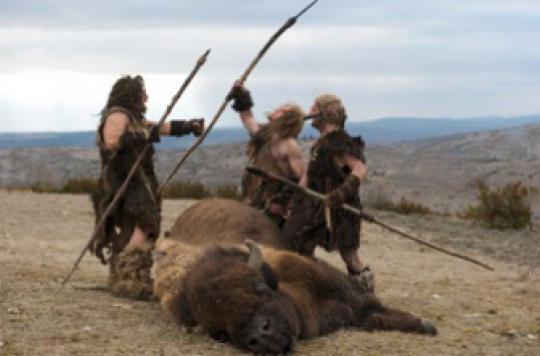It is not cognitive and behavioral inferiority that explains the disappearance of Neanderthals. They had the same abilities as their human contemporaries, according to a study.

Neanderthals, a primitive being eliminated by modern man? Far from it, say two researchers. This April 30 in PLOS One, a study analyzes point by point the theories on the disappearance of the Neanderthals… and refutes them. Far from the lower hominids that have long been portrayed, they had cognitive abilities similar to their contemporaries. homo sapiens.
Confirmed hunters and good craftsmen
Archaeologists have long believed that modern man is superior to Neanderthals in weaponry, language, and survival strategy. “Evidence of cognitive inferiority [de Néandertal] are simply not present, ”says Paola Villa, co-author of the study. “The conventional idea of Neanderthals is wrong. “
Neanderthals was a confirmed hunter: various sites revealed the presence of large prey (mammoths, woolly rhinos), medium and small size game. These hominids varied their diet according to their environment, taking advantage of aquatic and terrestrial resources. They had also developed structured living spaces, with specialized areas. While they did live in small groups, they were no less intelligent. The study reports traces of pigments on objects, bones transformed into tools and ornaments of symbolic value. The Neanderthals had even acquired mastery over fire and were able to make pitch.
So why did Neanderthals disappear?
An update that breaks with decades of preconceived ideas. In fact, until now, Neanderthals have been compared to the next generation of modern men, not their contemporaries. “That would amount to comparing the performance of Model T Fords, widely used in the USA and Europe at the beginning of the last century, and those of modern Ferraris, then concluding that Henry Ford was cognitively inferior to Enzo Ferrari,” explains Paola Villa.
If not because of inferiority, how could Neanderthals disappear? Analysis of the available genetic remains revealed complex crossbreeding between this species and modern man, as well as assimilation. We now know that the two species have reproduced. We thus observe that a large part of our genome is similar to that of the Neanderthals, and that we have inherited some of their diseases. Reproduction between the two species would have resulted in reduced fertility of the males. Combined with the massive arrival ofhomo sapiens of the African continent, this parameter very probably explains the disappearance of the Neanderthals.
.

















